
Orchestral Manoeuvres in the Dark (OMD) are an English electronic band formed in the Wirral, Merseyside, in 1978. The group consists of founding duo and principal songwriters Andy McCluskey and Paul Humphreys, along with Martin Cooper and Stuart Kershaw (drums). Regarded as pioneers of electronic music, OMD combined an experimental, minimalist ethos with pop sensibilities, becoming key figures in the emergence of synth-pop; McCluskey and Humphreys also introduced the "synth duo" format to British popular music. In the United States, the band were an early presence in the MTV-driven Second British Invasion.

George Andrew McCluskey is an English singer, songwriter, musician and record producer. He is best known as the lead singer and bass guitarist of the electronic band Orchestral Manoeuvres in the Dark (OMD), which he founded alongside keyboard player Paul Humphreys in 1978: McCluskey has been the group's sole constant member. He has sold over 40 million records with OMD, and is regarded as a pioneer of electronic music in the UK. McCluskey is noted for his on-stage frenetic 'trainee teacher' dance.

Paul David Humphreys is an English singer, songwriter and musician who is best known for his contributions to Orchestral Manoeuvres in the Dark (OMD), an electronic band which he founded alongside Andy McCluskey in 1978. John Doran in The Quietus remarked: "If, roughly speaking, McCluskey is the intellect and inquisitive nature in the group, then Humphreys is the heart."

Dazzle Ships is the fourth studio album by English electronic band Orchestral Manoeuvres in the Dark (OMD), released on 4 March 1983 by Virgin Records. Its title and cover art allude to a painting by Vorticist artist Edward Wadsworth based on dazzle camouflage, titled Dazzle-ships in Drydock at Liverpool.

Junk Culture is the fifth studio album by English electronic band Orchestral Manoeuvres in the Dark (OMD), released on 30 April 1984 by Virgin Records. After the commercial disappointment of the experimental Dazzle Ships (1983), OMD and Virgin intended for the group to shift towards a more accessible sound on its follow-up release. The band retained much of their early experimental approach but embraced a wider range of influences than previously, drawing inspiration from pop, dance, Latin and black music. Frontman Andy McCluskey characterised Junk Culture as "the catchiest, poppiest album we've ever made".

Architecture & Morality is the third studio album by English electronic band Orchestral Manoeuvres in the Dark (OMD), released on 6 November 1981 by Dindisc. Inspired by religious music, the group sought to broaden their musical palette by utilising elaborate choral samples, the Mellotron, and other new instruments to create a more naturalistic, emotive sound. The artwork was designed by longtime OMD collaborator Peter Saville, along with associate Brett Wickens, while its title was derived from the book Morality and Architecture by David Watkin.

Organisation is the second studio album by English electronic band Orchestral Manoeuvres in the Dark (OMD), released on 24 October 1980 by Dindisc. On Organisation the group worked with a producer for the first time, enlisting former Gong bass player Mike Howlett, while session musician Malcolm Holmes became the band's full-time drummer. The record is noted for its dark, melancholic tone in comparison to other OMD releases.
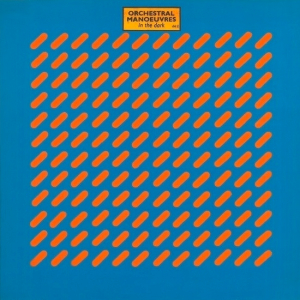
Orchestral Manoeuvres in the Dark is the debut studio album by English electronic band Orchestral Manoeuvres in the Dark (OMD), released on 22 February 1980 by Dindisc. Recorded at the group's Liverpool studio, it showcased their minimal synth-pop style and peaked at number 27 on the UK Albums Chart. "Electricity" and "Red Frame/White Light" were released as singles; a re-recorded version of "Messages" provided OMD with their first hit in the UK, reaching number 13.

Universal is the tenth studio album by English electronic band Orchestral Manoeuvres in the Dark (OMD), released on 2 September 1996 by Virgin Records. Frontman Andy McCluskey opted for a more organic, acoustic sound on the record, which peaked at number 24 on the UK Albums Chart. It was generally well received by music critics, although the British media's overall resistance to OMD – who had been rendered unfashionable by the prevalence of grunge and indie rock – prompted McCluskey to dissolve the group. Universal was their last album until 2010's History of Modern.

The Pacific Age is the seventh studio album by English electronic band Orchestral Manoeuvres in the Dark (OMD), released on 29 September 1986 by Virgin Records. It was the last of two OMD studio albums produced by Stephen Hague, after Crush (1985). The record exhibits the same refined production values as its predecessor while venturing into the realm of mid-1980s sophisti-pop, retreating further from the group's experimental beginnings.
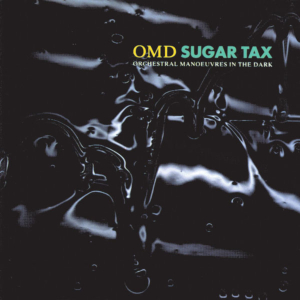
Sugar Tax is the eighth studio album by English electronic band Orchestral Manoeuvres in the Dark (OMD), released on 7 May 1991 by Virgin Records. It was the group's first studio album since 1986's The Pacific Age, and the first of three recorded without co-founder Paul Humphreys, who had departed in 1989. Featuring singer Andy McCluskey alongside a new backing band, Sugar Tax leans towards the then-prevalent dance-pop genre, with McCluskey's songwriting at times being influenced by the breakdown of his relationship with Humphreys.

Liberator is the ninth studio album by English electronic band Orchestral Manoeuvres in the Dark (OMD), released on 14 June 1993 by Virgin. Recorded by OMD frontman Andy McCluskey along with musicians enlisted for the multi-million selling Sugar Tax (1991), the album ventures further into the dance-pop style explored by its predecessor.
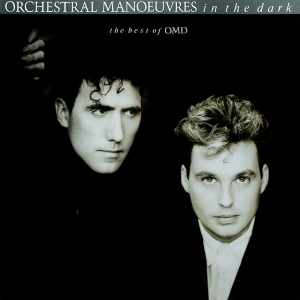
The Best of OMD is a compilation album by English electronic band Orchestral Manoeuvres in the Dark (OMD), released in 1988; marking a decade since the band's beginnings. The record essentially delineates the group's experimental early years from their pop-oriented later work: side one features recordings from 1979 to 1984, while side two is drawn from the group's 1984–1988 efforts.

"If You Leave" is a 1986 song by English electronic band Orchestral Manoeuvres in the Dark (OMD). It was recorded for the soundtrack to the film Pretty in Pink (1986), in which it is played prominently during the final scene. Along with 1980's "Enola Gay", the track has been described as OMD's signature song.
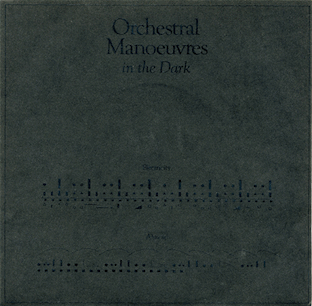
"Electricity" is the 1979 debut single by English electronic band Orchestral Manoeuvres in the Dark (OMD), featured on their eponymous debut album the following year. Andy McCluskey and Paul Humphreys sing the lead vocals on the track together in unison. Recognised as one of the most influential singles of its era, "Electricity" was integral to the rise of the UK's synth-pop movement. It has garnered praise from music journalists and other recording artists.

"Secret" is a 1985 song by English electronic band Orchestral Manoeuvres in the Dark (OMD), released as the second single from their album Crush. Paul Humphreys sings lead vocals on the track. It became their second US Billboard Hot 100 entry, peaking at number 63, and also made number 34 on the UK Singles Chart.

"Joan of Arc (Maid of Orleans)" is a song by English electronic band Orchestral Manoeuvres in the Dark (OMD), released in 1982 as the third single from their third studio album, Architecture & Morality. To prevent confusion with the group's previous single "Joan of Arc", the song was retitled "Maid of Orleans (The Waltz Joan of Arc)" for its single release. Both songs are about the French heroine Joan of Arc and both reached the Top 5 of the UK Singles Chart—although this release was more successful internationally, topping the charts in several countries including Germany, where it was the biggest-selling single of 1982. "Maid of Orleans" has sold four million copies worldwide.

English Electric is the twelfth studio album by English electronic band Orchestral Manoeuvres in the Dark (OMD), and their second since the 2006 reformation of the group. Preceded by lead single "Metroland" on 25 March 2013, it was released on 5 April by 100% Records. Unlike predecessor History of Modern (2010), which was compiled remotely via the Internet, English Electric saw OMD co-founders Andy McCluskey and Paul Humphreys write and record in person, with the aim of recreating their artistic chemistry in years past. The album was largely inspired by McCluskey's then-recent divorce.
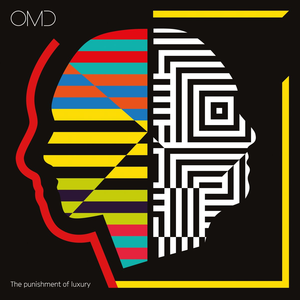
The Punishment of Luxury is the thirteenth studio album by English electronic band Orchestral Manoeuvres in the Dark (OMD), and the third since their 2006 reformation. Produced by OMD, it was released on 1 September 2017 by 100% Records in the UK and White Noise elsewhere. In July of that year, the band commenced a tour of North America and Europe in support of the record.
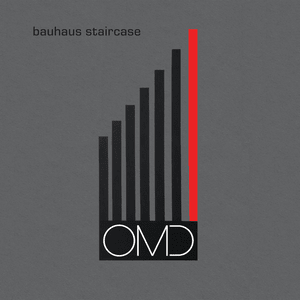
Bauhaus Staircase is the fourteenth studio album by English electronic band Orchestral Manoeuvres in the Dark (OMD), and the fourth since their 2006 reformation. Released on 27 October 2023 by White Noise Records, it is their first album in six years since The Punishment of Luxury (2017). The record was largely inspired by world politics during the late 2010s and early 2020s. Its release was preceded by three singles: the title track, "Slow Train", and "Veruschka".





















